Speakers & workshops
Active electromagnetic methods in near surface problems
– frequency and geometrical approach for depth penetration
Christian von Hebel (Forschungszentrum Jülich GmbH)Julien Guillemoteau (University of Potsdam)
WORKSHOP
Workshop
This workshop will be aimed on comparison of two approaches that are being used in shallow electromagnetic sounding (DEMP). Both of the approaches try to get better depth of investigation (DOI) with reasonable resolution but they achieve it differently – the first by changing the distance between the loops (using low induction numbers), the other by changing the transmitting frequency (using high induction numbers). We want to take a look at both of these unbiasedly, starting with two keynote speeches on either of the approaches, followed by presentation about our original field measurement comparing both techniques. In the end final conclusions and a panel discussion will follow. Interesting posters about using of any of the method are welcomed!
Authors
Christian von Hebel (Forschungszentrum Jülich GmbH): 3D Subsurface Imaging Using Calibrated Large-Scale Electromagnetic Induction Data
Julien Guillemoteau (University of Potsdam): Fast 1D and 2D inversion of multi-frequency electromagnetic loop-loop data
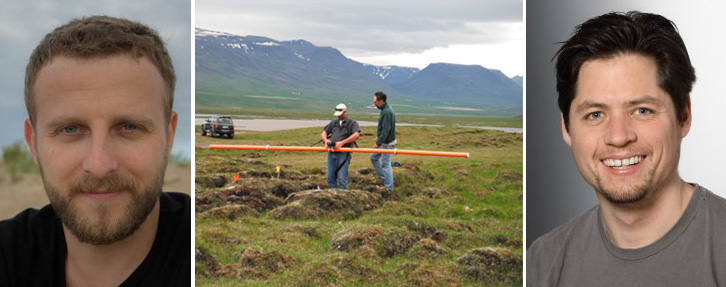
Signal Analysis and Seismic Interpretation
– How not to make a mistake?
Dawid SzafranskiWORKSHOP
Background
Usually, in seismic methods we can divide works into three main stages – acquisition, processing and interpretation. Also it is common that a person who is an expert in one field, does not know much about other two. However, integrated approach allows us to better understand data and interpret it in a reasonable way.
Workshop
During workshops participants will have an opportunity to get familiar with examples how important is good understanding of a registered signal. It will be shown how acquisition and processing can influence the signal and what we are able to interpret having particular dataset. At first, author will shortly introduce theory to follow with couple of practical exercises.
About the author
Dawid Szafranski held Master degree in the field of Geophysics. He finished University of Science and Technology in Cracow in 2014. Currently, he is working for Seismik s.r.o. in Prague, where he is focused on topics related with passive seismic methods. During his studies he participated in SEG/ExxonMobil Student Education Program in Berlin (2013) and 7th IPTC Student Education Week w Doha (2014). In 2013 he had also an internship in exploration unit of KGHM International in Sudbury (Canada).
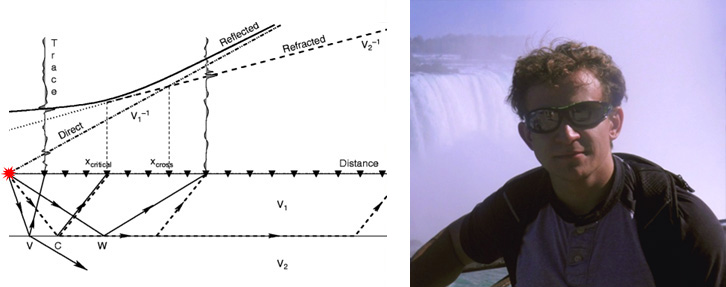
Sequence Stratigraphy
– Basic Concepts in Siliciclastics
Filip BielickiWORKSHOP
Background
Sequence stratigraphy analyse the sedimentary response to changes in base level, and the depositional trends that emerge from the interplay of accommodation (space available for sediments to fill) and sedimentation. Sequence stratigraphy has huge potential to decipher the Earth’s geological record of local to global changes, and to improve the predictive aspect of economic exploration and production. For these reasons, sequence stratigraphy is currently one of the most active areas of research in both academic and industrial environments.
Workshop
Participants will be provided with basic sequence-stratigraphic concepts in siliciclastic successions: definitions, relation to other stratigraphic disciplines, key stratigraphic surfaces, systems tracts and significance of sequence stratigraphy in exploration. Historical background will also be presented as the key to understanding respective models and theories. Practical part of the workshop will focus on team interpretation of well log, outcrop and seismic data within sequence-stratigraphic framework. Further discussion on results should take place and the voice risen by participants will be strongly recommended.
About the author
Filip Bielicki – M.Sc. in Exploration Geology (Adam Mickiewicz University, 2014), studied also Arctic Geology/Sequence Stratigraphy at The University Centre in Svalbard (2013). Exploration experience gained through the industry internships and external projects i.a. AAPG Imperial Barrel Award Program. His interests encompass petroleum geoscience, seismic and sequence stratigraphy and sedimentology. Frequent conference participant. Member of AAPG, EAGE, SEG and SEPM. After hours – alpinist, photographer and first aid instructor.
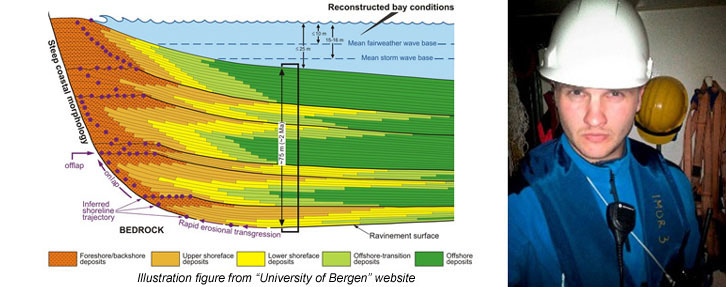
Soft-skills short course
English Science Writing & Illustrations Seminar
Matthew MarkleySHORT COURSE
For the English Science Writing
A major problem exists in writing English scientific papers. It is the inability to identify and articulate the differences between efficient and deficient science findings. To portray a clear story for the audience and to give them your facts proving your story is something that isn’t taught in many undergraduate and graduate programs in the USA, let alone in the world. Today’s short workshop will go over some fundamentals of preparing your manuscript for not only in your native language, but to also go one step further, and publish to English journals which have a wider scientific audience. We will discuss what might be a “valid” publication, costs, how to add co-authors such as if they did or did not contribute directly to the work (this is a big ethics issue), choosing how to arrange your sections of the paper based on the journal’s needs, quick how-to’s on publishing, and much more.
For the Science Illustration
This short seminar in English will look at how scientific illustrations impact how a reader responds to your data. In geology & geophysics, graphics and illustrations are the only way we can explain geological and geophysical data to both the trained and untrained reader. Sometimes a figure may mislead information between students and faculty advisors, as the author has learned the hard way. We will go over some sample images and how they properly portray the information in a lucid manner. Handouts to take home as a reference will be given out.
About the author
Matthew Markley is a Ph.D. student from Honolulu, Hawaii, USA. He received his BSc in Geology & Geophysics in 2010 and his MSc in Geology & Geophysics in 2014. English is his second language but growing up in many different states in the United States afforded him the ability to write and speak up to a graduate study level...
He once found himself staring down a career in electrical engineering and cellphone signal analysis, yet somehow found that lower pay and more tangible scientific evidence from rocks and field work was an infinitely better choice. His research interests include and included S-type and C-type asteroids, space weathering of airless bodies, instrument and laboratory engineering, driving semi-trucks, flying helicopters in war zones, and always finding ways to make his Mitsubishi Lancer Evolution go faster. (The author is interested in making you feel comfortable around him through humor so feel free to ask questions about anything!)

Petrophysics - Fundamentals and Applications
Nina Gegenhuber(University of Leoben)
EAGE LECTURE
About the Lecture
Petrophysics refers to the research on the physical properties of rocks, their experimental and theoretical derivation and their correlations. Petrophysical applications are important in various geoscience, petroleum and geotechnical fields. Therefore the lecture will give a short overview over the various petrophysical properties, including basic definitions, the most important equations, the measuring methods and the application of petrophysical interpretation on log data. Additionally short examples will be calculated. The students will get an introduction where petrophysics can be a powerful tool for the interpretation of data and how important laboratory data can be.
About the author
Nina Gegenhuber is assistant professor with qualification agreement for petrophysics at the Montanuniversitaet Leoben since 2012. She is responsible for the petrophysics laboratory and all petrophysics lectures for students from the petroleum engineering as well as for applied geological sciences. In 2011, she finished her doctoral studies about thermal properties and their correlation with other properties. She received her BSc and MSc in Applied Geological Sciences. Her research interest focuses on elastic and thermal properties as well as on mechanical properties. In June 2013 she received the “Arie van Weelden Adward” from the EAGE in London.
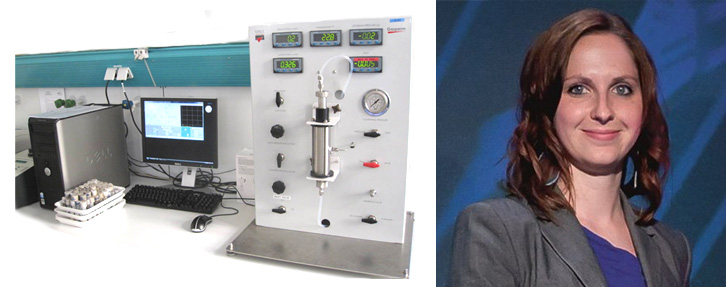
Robust workflows for seismic reservoir characterization
Patrick Connolly(BP Corporation, London)
SEG LECTURE
About the Lecture
Over the past two decades, BP has developed workflows to make predictions about lithology and fluid from seismic amplitudes. Their current form, which has stabilized in recent years, is based around a few fairly simply steps: two-term AVO coordinate rotations, spectral shaping derived from a power-law Earth spectrum model, and map-based detuning and calibration. These are underpinned by careful conditioning of the seismic and by close integration with petrophysical rock property analysis.
These processes have evolved to meet a number of criteria: (1) robustness and repeatability, (2) avoiding parallel workflows by integrating within existing practices, and (3) allowing most steps to be carried out by nonspecialist geophysicists.
Achieving robustness is also a prerequisite for making uncertainty estimates, which has many potential benefits: ranking the sources of uncertainty; validating our prediction models; providing a framework for integrating with other data types; and helping to understand the theoretical limits of seismic prediction.
In this talk, I'll outline the concepts behind the main steps in the seismic characterization workflow and discuss approaches to uncertainty estimation.
About the author
Patrick Connolly graduated from Birmingham University with a BSc in physics in 1977 and joined Seismograph Service Ltd as a data processor. After working in Oman, New Zealand, Pakistan, and London, he moved to Britoil in Glasgow in 1982 and worked as a seismic programmer until the company was acquired by BP in 1989.
Connolly has remained with BP as a seismic analyst and occasional interpreter in Aberdeen, Houston, and London. He has been a member of a number of exploration and appraisal teams: Foinaven and Schiehallion (West of Shetland), Holstein (Gulf of Mexico), and Greater Plutonio (offshore Angola). Since 2001, he has worked in BP's E&P Technology division and currently is manager, Seismic Reservoir Characterization and Surveillance R&D.
Patrick was awarded the SEG Virgil Kauffman Gold Medal in 2001 for his development of elastic impedance technology. He was an EAGE distinguished lecturer in 2007.
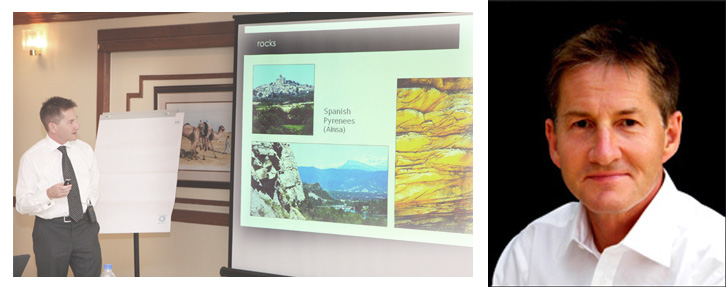
Unconventional oil and gas fields
and microseismic monitoring
Dr. Leo Eisner(Seismik s.r.o.)
KEYNOTE SPEECH
Abstract
Unconventional production from tight formations changed oil and mainly gas industry from one of the most boring to the most admired (and hated by some groups) industries. The game changer, at least in North America, became production from vast shale reservoirs which seem to be much more democratically distributed throughout the world. As a participant in this energy revolution I will tell you my research story, starting from the history of natural gas production coal bed, tight sand up to Barnett shale. I will explain why microseismic monitoring and geophysics in general play key role in developing of these fields. In detail I will discuss principles of microseismic monitoring from borehole to surface monitoring and from detection to source mechanism and reservoir simulation. I will also talk about social aspect including induced seismicity but also covering some of the fears associated with unconventional production.
About the author
Leo Eisner was born in Prague in 1970. He obtained MSc. from the Charles University in Prague (Faculty of Mathematics and Physics) and Ph.D. in Geophysics from the California Institute of Technology. He spent nearly seven years as a Senior Research Scientist with Cambridge Schlumberger Research where he filed five patents and issued numerous publications. He joined MicroSeismic, Inc. in 2008 and was promoted to the Chief Geophysicist in 2009. He has accepted honorary position of Purkyne Fellow at the Academy of Sciences of the Czech Republic in Prague in 2010. Since 2015 he is the president of seismic service company Seismik s.r.o. He is also a Continuous Education lecturer for SEG on microseismicity. His publications cover a broad range of subjects, including the seismic ray method, finite-difference methods, seismological investigations of local and regional earthquakes and microearthquakes induced by hydraulic fracturing, etc.
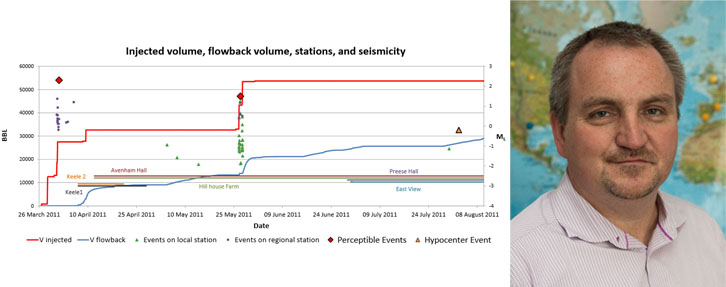
Crossing the boundaries with a different meaning
Intersecting waves of conflicting dips
– elimination or preservation and enhancement
Seweryn Tlalka(Geofizyka Torun)
KEYNOTE SPEECH
Abstract
Onshore seismic data processing with task to reconstruct of true amplitude relations needs specific approach to the land noise elimination and “useful” seismic signal enhancement. Intersecting waves of conflicting dips are always present in the time domain in the seismic data. They need to be eliminated or preserved depending on the character of waves and seismic data processing requirements. If additionally complex geological structures exist, the intersecting waves create complex pattern and cannot be easily enhanced or attenuated.
Advanced methods, called non invasive, allow to eliminate the unwanted waves and leave useful signal untouched. These methods are remedy in such challenging areas where ground roll, guided waves, air waves, side scattered waves and cultural coherent noise, intersect with each other and with useful weak reflections. To enhance the weak seismic signal covered by strong noise, advanced methods of generalized stacking are applied. These methods are especially helpful in areas of complex geology and low quality of seismic data, where diffractions are being mixed with reflections and multiples. ECPGT belongs to generalized stacking group of methods and allows to obtain more information from seismic data compared to conventional CMP stacking and Common Reflection Surface stacks. It does not only allow to enhance correlation of seismic horizons, but preserves conflicting dips as well.
Presented methods are frequently the only way to receive unchanged signal in areas where strong noise occurred and when standard procedures failed. Non-standard methods of signal extraction from noise sometimes are the only way to get insight into the geology. The right solution of structural image is frequently ambiguous, but crucial for seismic data interpretation. The effectiveness of presented methods was proved in cases of real and synthetic data.
About the author
Seweryn Tlalka was graduated in 2006 with MSc in geophysics and BSc in informatics in the same year from Silesia University, Katowice, Poland. He did postgraduate studies in applied geophysics and in marketing and management. He joined GT R&D seismic data processing team in 2006 and went through all seismic data processing activities. Experienced in production seismic data processing in time domain as well as in depth imaging, both in Poland and in overseas processing centers. He was project leader, project coordinator and geophysical advisor. Has been working in developments of various GT novelty processing techniques. Is publishing at home conferences (Geopetrol, different workshops), and at EAGE and SPG Exhibition and Conference.
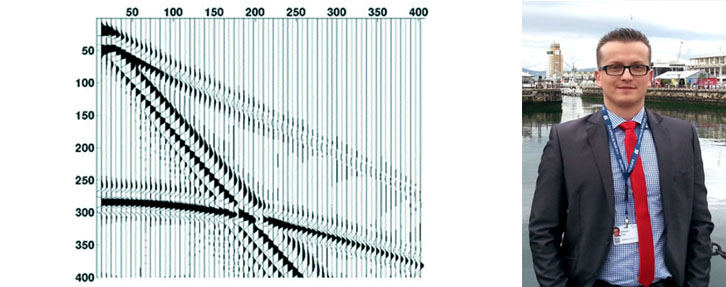
Experimental View of Geological Processes
in Earth’s Deep Interior
Dr. David Dolejs(Associate professor of geology, Faculty of Science in Prague)
KEYNOTE SPEECH
Abstract
Experimental geosciences have been steadily experiencing advances in instrumental and analytical techniques and now access physical conditions, which cover the entire planetary interior as well as spatial resolution that can unravel material properties down to nano-scale. He will review our recent experimental and thermodynamic studies that highlight fluid dynamics and related mass transfer in the Earth’s crust and upper mantle. Using multi-anvil apparatus experiments he will demonstrate alternative causes of seismic splitting of the 410-km discontinuity due to strong hydration of the Earth’s mantle. The decoupling of halogen and hydroxyl incorporation in mantle minerals and patterns of fluid flow through the mantle wedge then provide explanation for the entire spectrum of halogen concentrations observed in arc magmas. Finally, he will present new instrumental developments for mineral-fluid interactions at high pressures and demonstrate various means of estimating fossil fluid fluxes in orogenic settings.
About the author
- Ph.D. dean's honour list (McGill University, 2004)
- Postdoctoral fellow (Bayerisches Geoinstitut, 2004-2008)
- Assistant, now associate professor (Charles University, since 2008); institute director (2010-2013)
His research interests include experimental and field approaches to magmatic and hydrothermal systems, combined with physical chemistry, thermodynamics and numerical modeling. He conducts experimental studies of solid-melt-fluid equilibria at crustal pressures, develops thermodynamic equations of state for multicomponent melts and fluids, and uses geodynamic models in order to apply these results to natural systems. His studies are applicable to generation and differentiation of magmas in the lithosphere, volcanic and geothermal systems, origin of ore deposits and reactive fluid flow. He have co-authored more than 35 papers in major international journals
Awards Granted:
- Walter Hitschfeld award (Montreal, 2001)
- Albert Maucher Prize in Geosciences (Munich, 2007)
- InoLec award (Brno, 2007)
- SGA-Barrick Young Scientist award (Uppsala, 2013)
- Faculty of Science award for excellence in teaching (Prague, 1998, 2011)
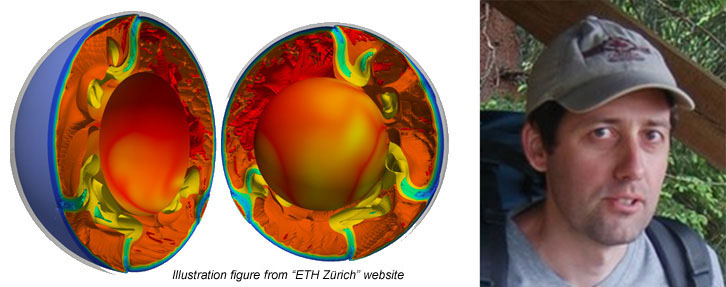
Copyright © 2014-2015, IGSC6 v1.4 by Miroslav Hallo